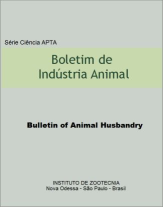Effects of providing preweaning diets to piglets: a review of the literature
DOI:
https://doi.org/10.17523/bia.v72n1p77Keywords:
creep feed, preweaning diet, suckling pigletsAbstract
Providing a solid diet in addition to sow milk during lactation (creep feed) is a management commonly recommended to producers. This practice was introduced as a strategy to minimize the deleterious effects of abrupt and early weaning, as well as to standardize the litters to be weaned, to increase weaning weight, and to accelerate the adaptation of the gastrointestinal tract of piglets to solid diets. Creep feeds are formulated to present high levels of digestibility and palatability and to contain high-quality and high-cost ingredients. However, the results of studies indicating that the simple offer of creep feed is efficient in minimizing the deleterious effects of weaning or in facilitating the adaptation of piglets to early diets are still sparse and poorly consolidated. The objective of this study was to review factors that influence the consumption of creep feed and the effects of consumption of these diets on performance during lactation, as well as possible effects on enzyme production, occurrence of diarrhea episodes and postweaning performance of piglets weaned at 21 to 28 days of age. The results indicate that the intestinal maturity of suckling piglets is not sufficient to permit voluntary consumption and adequate digestion of the diets. Even animals ready for consumption did not ingest sufficient amounts to promote enzymatic adaptation or to improve postweaning performance. Contrary to expectations, the consumption of creep feed, especially in low amounts, may be associated with sensitization of the gastrointestinal tract which results in hypersensitivity reactions and postweaning diarrhea. It can be concluded that the simple offer of creep feed is not efficient in promoting growth during lactation and postweaning, nor does it facilitate the early adaptation of weaned piglets to solid diets. Studies in this area are therefore necessary to develop techniques that can effectively minimize losses resulting from the practice of early weaning of piglets.Downloads
Downloads
Published
Issue
Section
License
Os autores não serão remunerados pela publicação de trabalhos, pois devem abrir mão de seus direitos autorais em favor deste periódico. Por outro lado, os autores ficam autorizados a publicar seus artigos, simultaneamente, em repositórios da instituição de sua origem, desde que citada a fonte da publicação original seja Boletim de Indústria Animal. A revista se reserva o direito de efetuar, nos originais, alterações de ordem normativa, ortográfica e gramatical, com vistas a manter o padrão culto da língua e a credibilidade do veículo. Respeitará, no entanto, o estilo de escrever dos autores. Alterações, correções ou sugestões de ordem conceitual serão encaminhadas aos autores, quando necessário. Nesses casos, os artigos, depois de adequados, deverão ser submetidos a nova apreciação. As opiniões emitidas pelos autores dos artigos são de sua exclusiva responsabilidade. Todo o conteúdo deste periódico, exceto onde está identificado, está licenciado sob a Licença Creative Commons Attribution (CC-BY-NC). A condição BY implica que os licenciados podem copiar, distribuir, exibir e executar a obra e fazer trabalhos derivados com base em que só se dão o autor ou licenciante os créditos na forma especificada por estes. A cláusula NC significa que os licenciados podem copiar, distribuir, exibir e executar a obra e fazer trabalhos derivados com base apenas para fins não comerciais.













